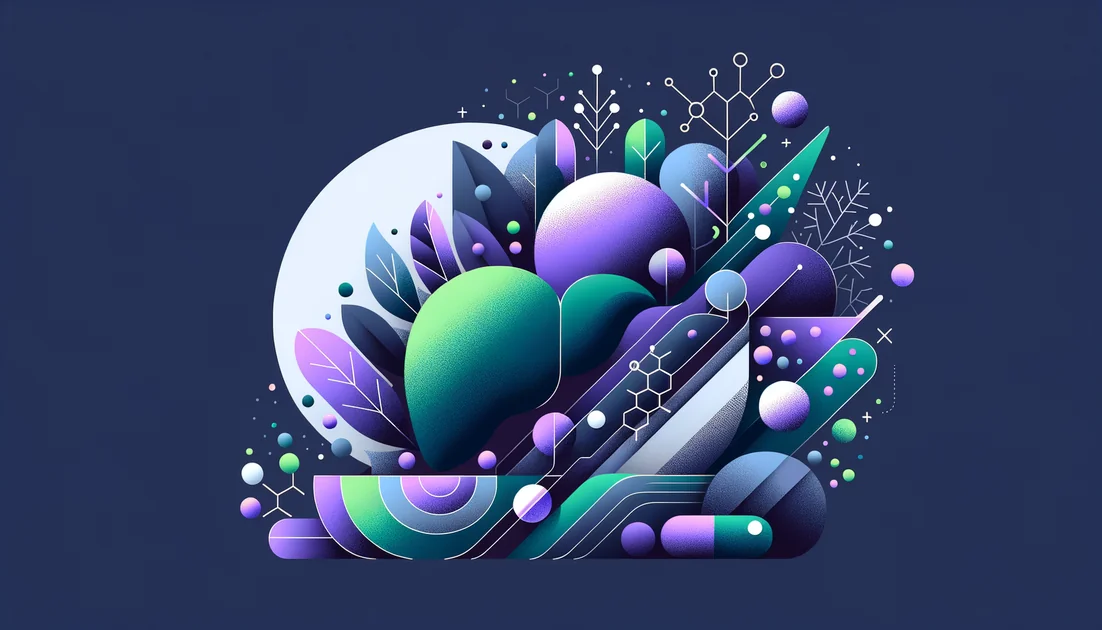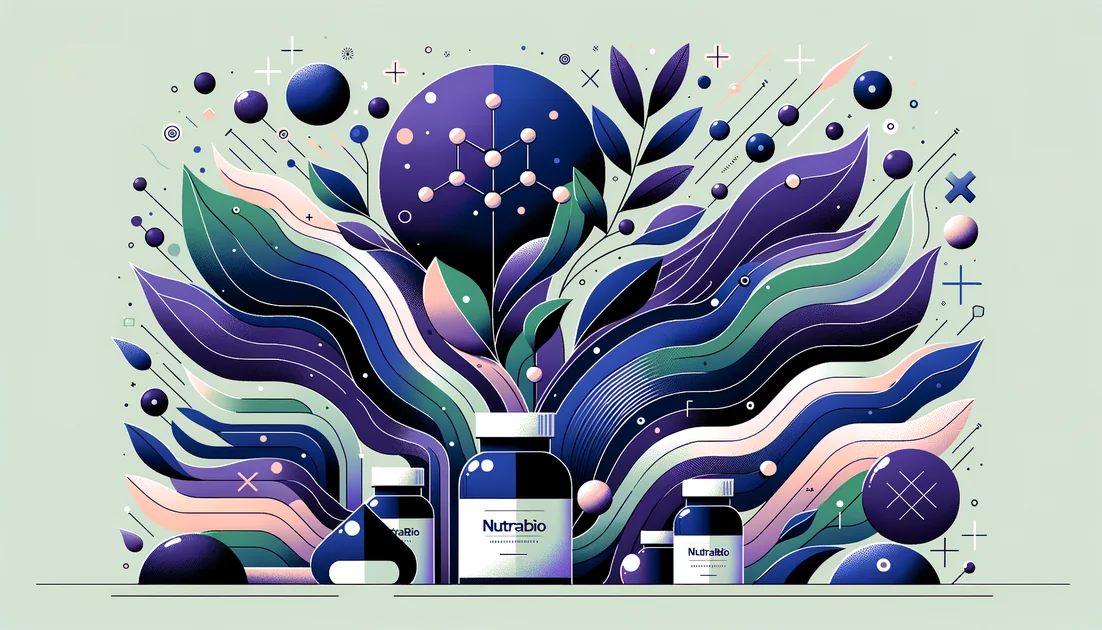
Top 10 Evidence-Based Recommendations
We analyzed meta-analyses and the largest RCTs in fatty liver (NAFLD/MASLD and biopsy-proven NASH), prioritizing meaningful liver-fat loss (MRI/CT/ultrasound), histology where available, enzyme drops, safety, and practicality from >60 human trials. No fluff, no affiliate picks—just what moves the needle, fast and safely, with [^] citations throughout.
Quick Reference Card
Omega-3s (EPA/DHA)
Vitamin E (RRR-α-tocopherol)
Delta-tocotrienols
L-Carnitine
Show all 10 supplements...
Probiotics/Synbiotics
Ranked Recommendations
#1Omega-3s (EPA/DHA fish oil)Top Choice
The reliable fat-squeezer for your liver
Dose: 2–4 g/day EPA+DHA with meals for 12–24 weeks
Time to Effect: 8–12 weeks for liver fat; 4–8 weeks for triglycerides
How It Works
Evidence
High triglycerides, MRI/ultrasound-proven steatosis, those wanting cardio-metabolic upside too
Fishy burps; mild antiplatelet effect—use caution with anticoagulants
Aim for products listing EPA and DHA milligrams (not just "fish oil"); triglyceride or re-esterified TG forms are well absorbed.
#2Vitamin E (RRR-α-tocopherol)Strong Alternative
The only supplement with biopsy-proven NASH response
Dose: 800 IU/day RRR-α-tocopherol for 96 weeks (non-diabetic NASH)
Time to Effect: 24–48 weeks for histology; 8–12 weeks for enzymes
How It Works
Potent antioxidant dampening lipid peroxidation and inflammatory injury that drive ballooning and NASH activity. [1]
Evidence
The NIH PIVENS RCT showed 43% NASH improvement vs 19% placebo over 96 weeks (non-diabetic adults); fibrosis not improved. Not generalizable to diabetics. [1]
Biopsy-proven NASH without diabetes, under clinician guidance
Possible ↑ hemorrhagic stroke and prostate cancer risk signals in other populations; discuss risks/benefits and avoid mega-dosing unnecessarily. [9]
Use natural RRR-α-tocopherol; reassess need at 6–12 months with your clinician.
#3BerberineWorth Considering
The insulin-and-lipid fixer that trims liver fat
Dose: 500 mg three times daily with meals (1.5 g/day) for 12–16 weeks
Time to Effect: 4–8 weeks for enzymes and lipids; 12–16 weeks for liver fat
How It Works
Evidence
NAFLD with insulin resistance, prediabetes/T2D, atherogenic lipids
GI upset; may interact with CYP3A4/P-gp drugs and lower glucose—monitor if on hypoglycemics
Choose berberine HCl from reputable brands; split dosing tames GI effects.
#4Delta-tocotrienols (vitamin E family)
Vitamin E's under-the-radar cousin with enzyme wins
Dose: 300 mg twice daily for 24 weeks
Time to Effect: 8–12 weeks for enzymes; 24 weeks for steatosis grade
How It Works
Antioxidant/anti-inflammatory effects distinct from tocopherols; modulates SREBP and NF-κB pathways tied to steatosis. [5]
Evidence
Placebo-controlled RCT (24 weeks) showed improvements in ALT/AST, inflammation markers, and ultrasound steatosis vs placebo. [5]
Those who can't take high-dose α-tocopherol but want redox support
Generally well tolerated; avoid stacking with high-dose α-tocopherol unless supervised
Annatto-derived δ-tocotrienol products typically provide the studied profile.
#5L-Carnitine
Turns fat into fuel inside liver mitochondria
Dose: 1–2 g/day (adults) for 8–24 weeks
Time to Effect: 4–8 weeks for enzymes; 8–12 weeks for triglycerides
How It Works
Shuttles long-chain fatty acids into mitochondria, boosting β-oxidation and lowering hepatic fat accumulation. [2]
Evidence
Meta-analysis of 8 RCTs shows significant ALT/AST reductions and triglyceride benefits, with stronger effects in adults. [2]
Fatigue plus NAFLD, high triglycerides, those intolerant to fish oil
Fishy odor, mild GI upset
Acetyl-L-carnitine is also effective; take with meals to reduce GI issues.
#6Curcumin (enhanced bioavailability)
Inflammation down, enzymes down
Dose: 1000–1500 mg/day standardized curcuminoids with piperine/phospholipid for 8–12 weeks
Time to Effect: 4–8 weeks for enzymes; 8–12 weeks for ultrasound severity
How It Works
Evidence
People prioritizing inflammation, enzymes, and metabolic markers
Gallbladder disease risk, anticoagulant interactions at high doses
Pick phytosomal or piperine-enhanced formulas; plain turmeric won't cut it.
#7Probiotics/Prebiotics/Synbiotics
Fix the gut–liver axis to ease liver injury
Dose: Multi-strain Lactobacillus/Bifidobacterium 10–20B CFU/day or synbiotic for 8–24 weeks
Time to Effect: 8–12 weeks for enzymes; 12–24 weeks for stiffness/fibrosis indices
How It Works
Rebalances microbiota and gut permeability, lowering endotoxin-driven inflammation to the liver. [7]
Evidence
2024 meta-analysis of 34 trials (12,682 individuals) reported significant improvements in ALT/AST, hepatic fibrosis indices, and triglycerides. [7]
Bloating, dysbiosis, or those targeting stiffness (FibroScan) and enzymes
Use caution if severely immunocompromised; rare bacteremia cases
Evidence favors multi-strain blends; pair with 10–15 g/day soluble fiber if tolerated.
#8Silymarin (milk thistle)
Solid for enzymes, mixed for histology
Dose: 420–700 mg/day standardized silymarin; or silybin-phosphatidylcholine per label for 6–12 months
Time to Effect: 8–12 weeks for enzymes
Evidence
People wanting enzyme relief with long safety track record
Generally well tolerated; rare GI upset
Phytosomal silybin (with phosphatidylcholine) improves absorption; don't expect fibrosis reversal.
#9Phosphatidylcholine (Choline)
Supports VLDL export—fat needs a ride out
Dose: 2400 mg/day phosphatidylcholine for 12 weeks
Time to Effect: 8–12 weeks for CAP (steatosis) and enzymes
How It Works
Supplies choline for phosphatidylcholine, essential for VLDL assembly/export; deficiency promotes fatty liver. [24]
Evidence
Randomized controlled study (2024) showed improvements in controlled attenuation parameter and stiffness vs conventional care alone. [24]
Low-choline diets, vegetarians/vegans, genetic PEMT variants (family history of fatty liver)
GI bloating in some; avoid very high doses long-term
If you get fishy odor, switch choline form or lower dose.
#10Green tea catechins (EGCG-rich)
Antioxidant brew that lightens liver fat
Dose: >1 g/day catechins via beverage or 500–800 mg/day EGCG extract for 12 weeks
Time to Effect: 8–12 weeks for ALT and CT/ultrasound fat
How It Works
Reduces oxidative stress and lipogenesis; may aid fat oxidation. [26]
Evidence
Tea lovers seeking gentle, adjunctive support
High-dose extracts can irritate the stomach; take with food
If using extract, pick decaffeinated, third-party tested EGCG to avoid contaminants.
Common Questions
How fast can supplements reduce liver fat?
Most trials show changes by 8–12 weeks; histology-level NASH responses (vitamin E) take ~12–24 months. [1][10]
Which single supplement helps most people with fatty liver?
Omega-3 EPA/DHA—consistent imaging and enzyme improvements, plus cardiovascular benefits. [10][11]
Is vitamin E right for me?
Only consider 800 IU/day if you have biopsy-proven NASH and no diabetes, under medical supervision. [1]
Can I take berberine and fish oil together?
Yes—different mechanisms; the combo targets insulin resistance and triglyceride overflow. [10][20]
Do these replace diet and exercise?
No. All RCTs layered on lifestyle. Weight loss of 7–10% remains the biggest lever; supplements are add-ons.
Timeline Expectations
Fast Results
Combination Strategies
Metabolic Fix + Fat Out Stack
Components:Berberine 500 mg TID + Omega-3 EPA/DHA 2–4 g/day + L-Carnitine 1–2 g/day
Targets the 3 biggest hepatic fat drivers—insulin resistance (berberine), triglyceride overflow (EPA/DHA), and sluggish β-oxidation (carnitine)—delivering additive drops in enzymes and liver fat. [10][12][20][2]
With meals: berberine 500 mg three times daily; fish oil split BID; L-carnitine once or split BID. Run 12 weeks, recheck ALT/AST and ultrasound/MRI if available.
Inflammation & Stiffness Stack
Components:Curcumin 1000–1500 mg/day (enhanced) + Probiotic multi-strain 10–20B CFU/day + Silymarin 420–700 mg/day
Curcumin and silymarin calm hepatocyte injury; probiotics reduce gut-derived inflammation and modestly improve fibrosis indices; together they address enzyme elevation and liver stiffness. [3][7][16][25]
Take curcumin and silymarin with food; probiotic daily for at least 12–24 weeks. Assess FibroScan (LSM) at baseline and ~6 months.
NASH (Doctor-Supervised) Stack
Components:Vitamin E 800 IU/day (non-diabetic NASH) + Omega-3 EPA/DHA 2–4 g/day
Vitamin E is the only supplement with RCT histologic NASH improvement (non-diabetics); omega-3s layer on liver-fat and triglyceride reductions for cardiometabolic protection. [1][10][12]
Only if non-diabetic and approved by your hepatology team. Take daily with meals; reassess at 6–12 months for continuation.
You might also like
Explore more of our evidence-led investigations, comparisons, and guides across every article style.

NutraBio
NutraBio: The Transparency Standard—with Prices That Mostly Add Up

Uridine 5'-Monophosphate (UMP) vs Triacetyluridine (Uridine Triacetate, TAU)
Pick UMP for everyday, lower-cost stacking with DHA/choline; pick TAU if you specifically need maximum systemic uridine delivery and have medical oversight. Evidence for outcomes favors UMP-containing formulas; TAU wins on bioavailability. [6][7][1][2]


Valerian Root (Valeriana officinalis)
A siren wails over London in 1941. In the underground shelter, a nurse passes around a few earthy, sharp-smelling drops—valerian, the same root Hippocrates praised and Galen prescribed. The idea is simple: calm the nerves, sleep if you can. Eighty years later, the same root sits on modern nightstands, promising rest. But does it deliver—and how? [1][2]

Lion's Mane + Bacopa: Smart Memory Duo or Just Hype?
The combo is a theoretical dual-pathway stack (neurotrophic + cholinergic), but there are no direct head-to-head studies proving synergy.

Tocotrienols
The stealthier cousins of vitamin E—built with springy tails that move differently in cell membranes and behave differently in your body.
















